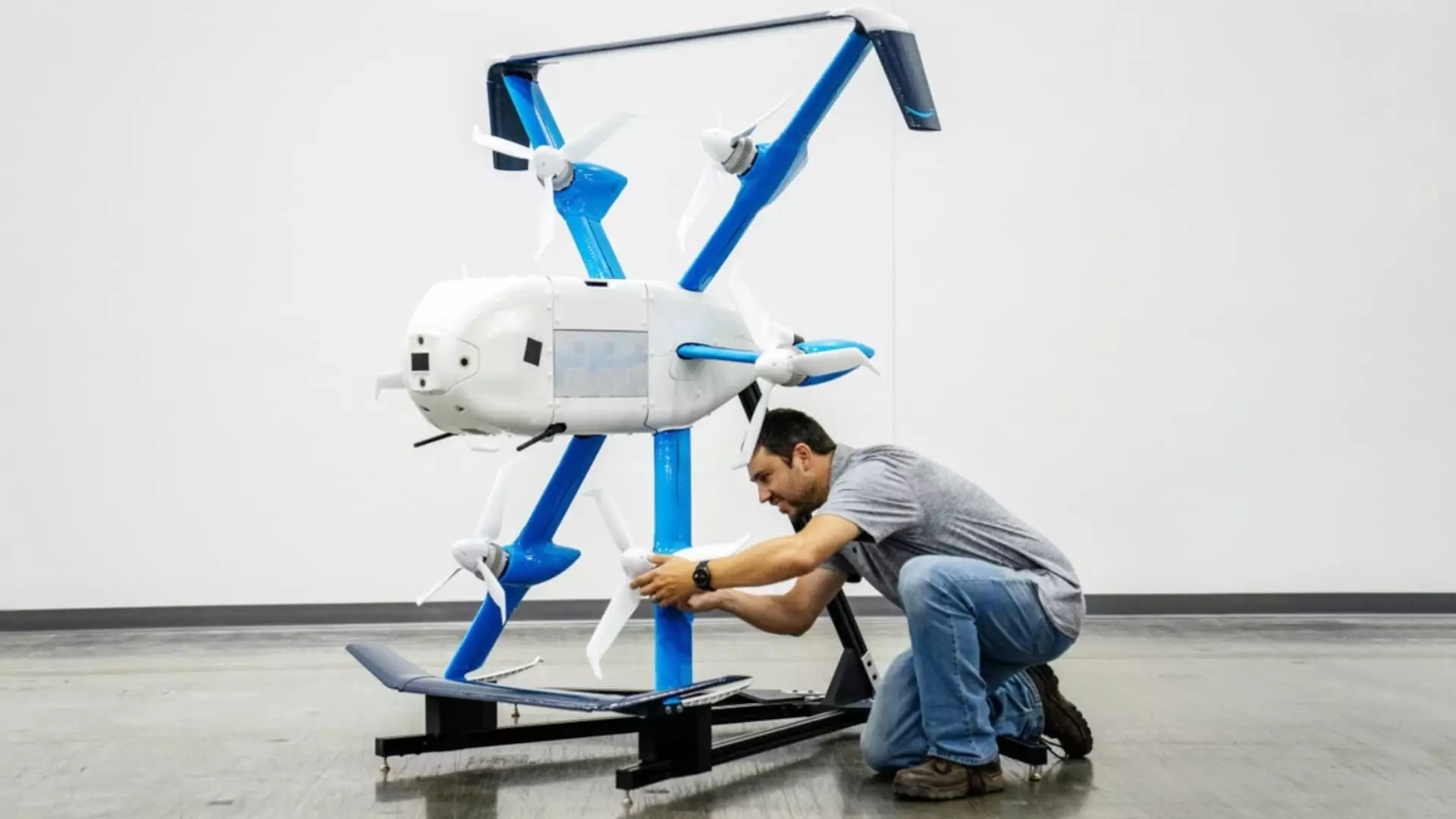The development of drone technology for deliveries has been a topic of significant interest and investment over the last decade, capturing the imagination of consumers and logistics companies alike. Amazon, a pioneer in e-commerce and technology innovation, is once again in the spotlight as it receives regulatory approval to commence operations with its latest drone model, the MK30. This advancement signifies not only the potential for transformative change in delivery logistics but also highlights the complicated journey that Amazon has faced in bringing its Prime Air program to fruition.
In November 2022, Amazon introduced the MK30 drone, a smaller and quieter model designed specifically to improve its delivery capabilities. The MK30 features enhanced specifications that include the ability to operate in light rain and, significantly, offers double the range compared to its predecessors. This technological leap is essential as it allows Amazon to expand its service area and improve operational efficiency. The Federal Aviation Administration (FAA) provided crucial approval for Amazon to fly the MK30 beyond the visual line of sight of its operators, marking a pivotal moment in Amazon’s quest to revolutionize last-mile delivery.
However, this approval is not a panacea. Amazon’s initial plans for drone operations were announced more than ten years ago, with an optimistic projection of having the service fully operational within five years. This timeline has proven overly ambitious as the company contends with rigorous regulatory scrutiny, operational setbacks, and operational challenges that underscore the complexity of integrating drone technology into existing logistics frameworks.
As of late October 2023, Amazon has initiated drone deliveries in Tolleson, Arizona, not far from Phoenix, where its logistics network is already established. This marks a critical strategic move that signifies Amazon’s efforts to embed Prime Air within its broader operational ecosystem. Matching drone operations with existing warehouses is expected to streamline delivery processes, potentially allowing for quicker dispatch and enhanced customer satisfaction.
However, the path has not been without obstacles. The Prime Air program has faced numerous regulatory hurdles, leading to missed deadlines and even layoffs in recent years. High-profile exits within the company’s management, including the loss of key figures in its FAA interactions, have further complicated the narrative. Despite these challenges, Amazon has desisted from abandoning its drone ambitions, instead opting to appoint former Boeing executive David Carbon to lead the charge. His experience and leadership will be pivotal in navigating regulatory murkiness and operational complexities that lie ahead.
As Amazon pushes forward with its drone delivery initiative, it faces resistance from local communities. In College Station, Texas, for example, residents have raised concerns about the noise generated by the drones, prompting officials to voice their apprehensions to the FAA. This backlash illuminates the often-overlooked aspect of technological advancement: the need to balance innovation with community acceptance. Residents have voiced strong opinions regarding their quality of life, and their concerns pose a significant challenge for Amazon as it seeks to expand its operational footprint. In response, the company has committed to identifying alternative drone launch sites, showcasing a willingness to engage with community feedback, albeit with a target date of October 2025.
In the larger context, Amazon is not alone in its quest for drone delivery supremacy. The company faces stiff competition from several players in the market, including Wing, a subsidiary of Alphabet, as well as logistics giants like UPS and Walmart. Startups such as Zipline and Matternet are also vying for a piece of the drone delivery pie, making this an increasingly crowded space.
Ultimately, Amazon’s journey into the world of drone deliveries underscores the intersection of ambition, technology, and community dynamics. While the MK30 drone represents a significant step towards realizing the dream of efficient, aerial logistics, the path is fraught with challenges that encompass regulatory, operational, and societal dimensions. As Amazon endeavors to navigate these uncharted skies, one thing remains clear: the future of delivery services is poised for dramatic transformation, but the transition will require careful consideration of the concerns and expectations of the communities that will be most impacted by this new technology.


Leave a Reply